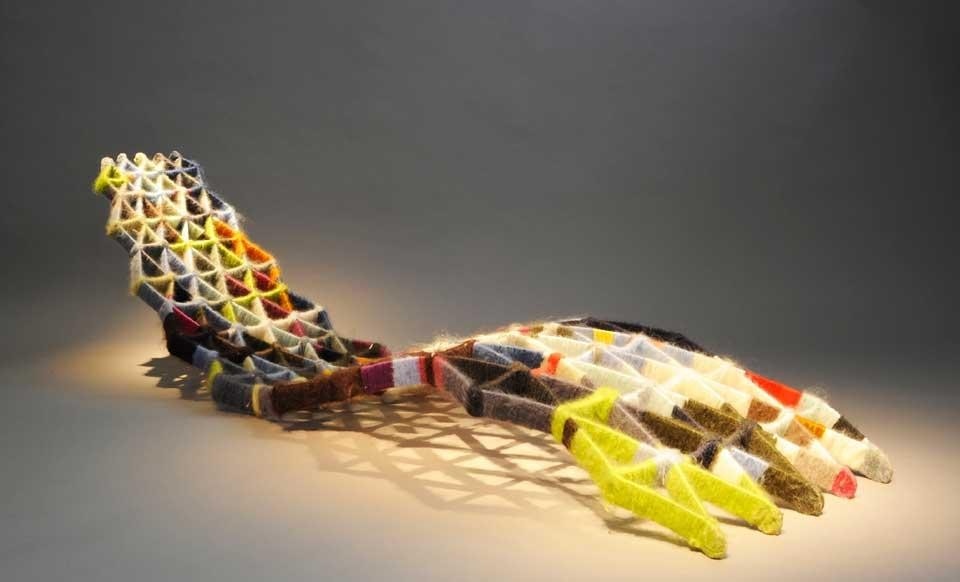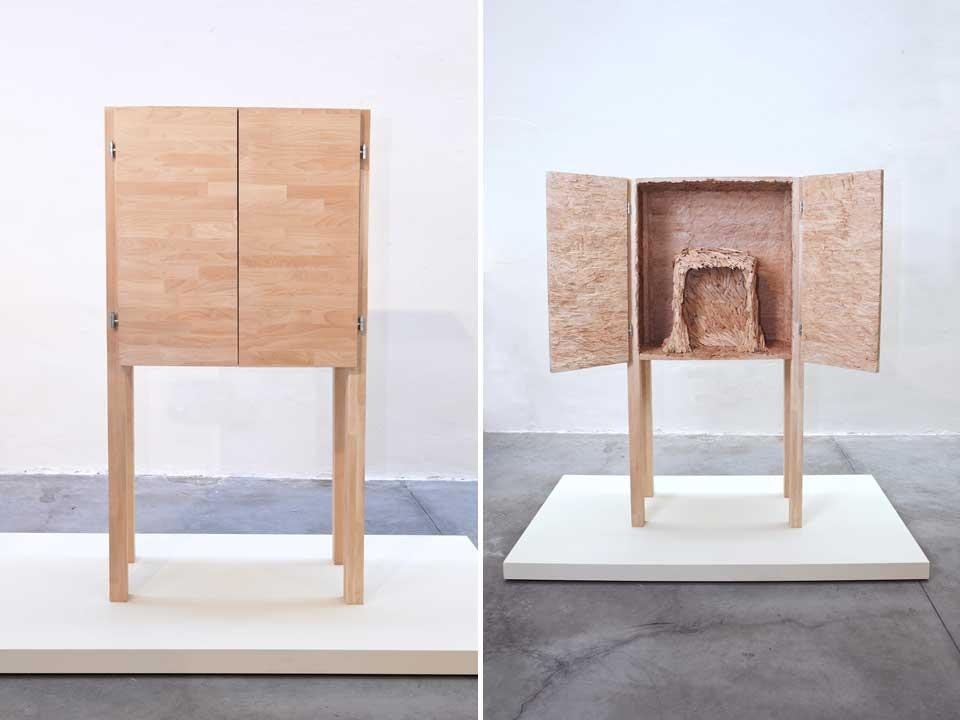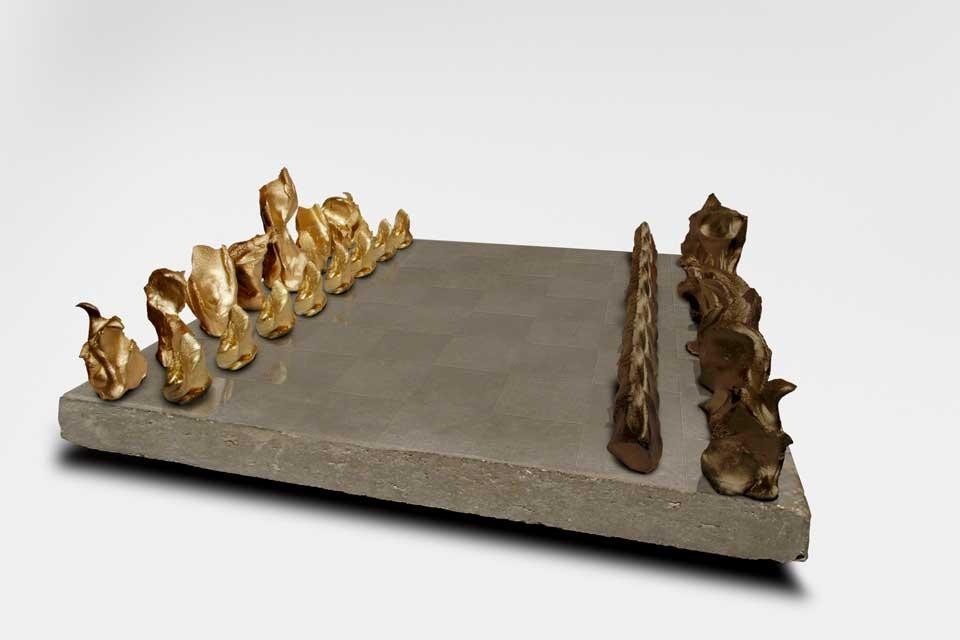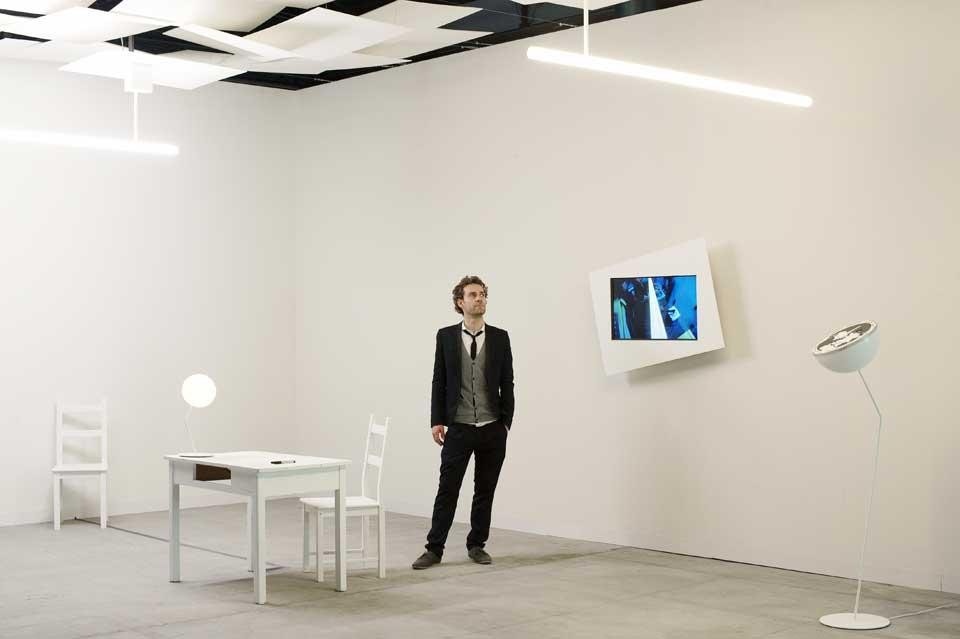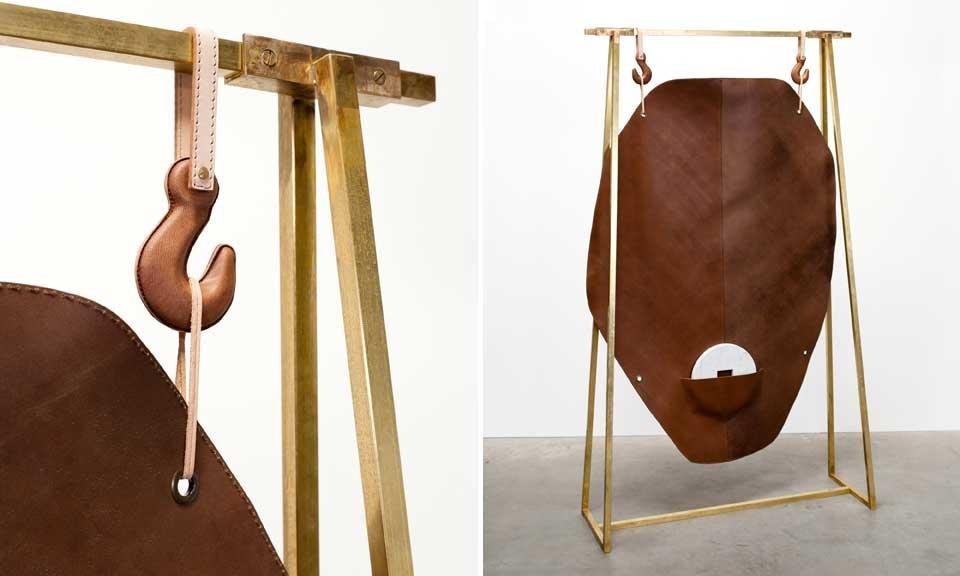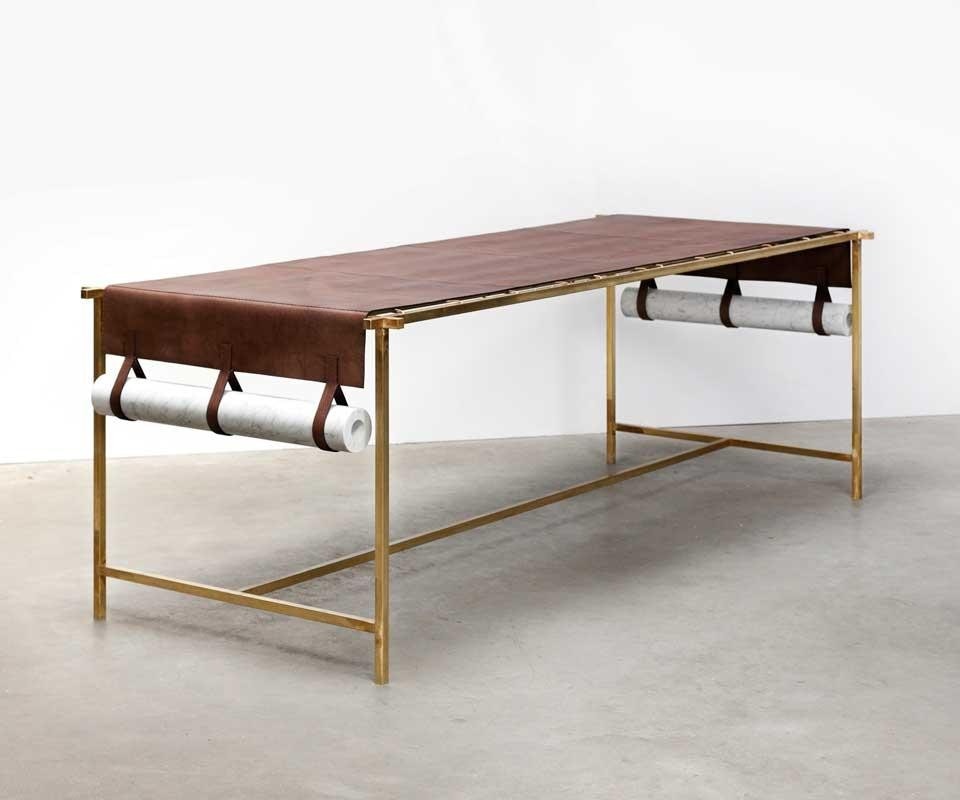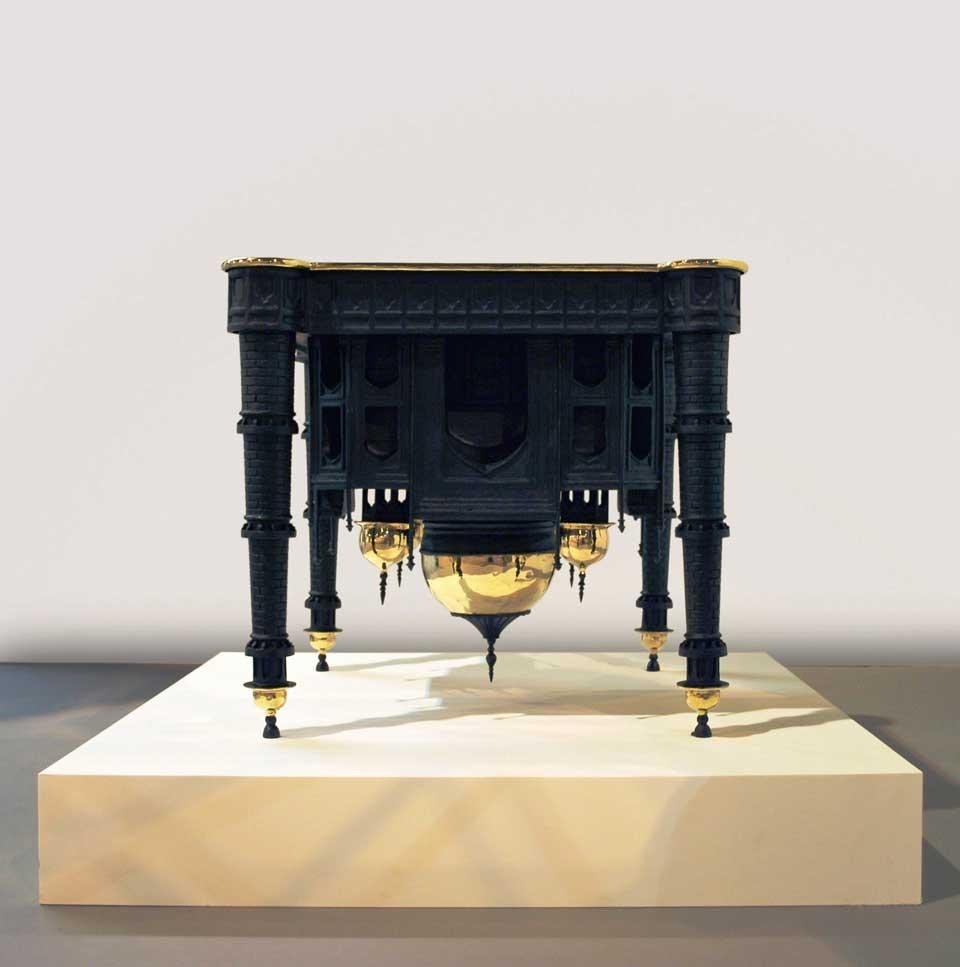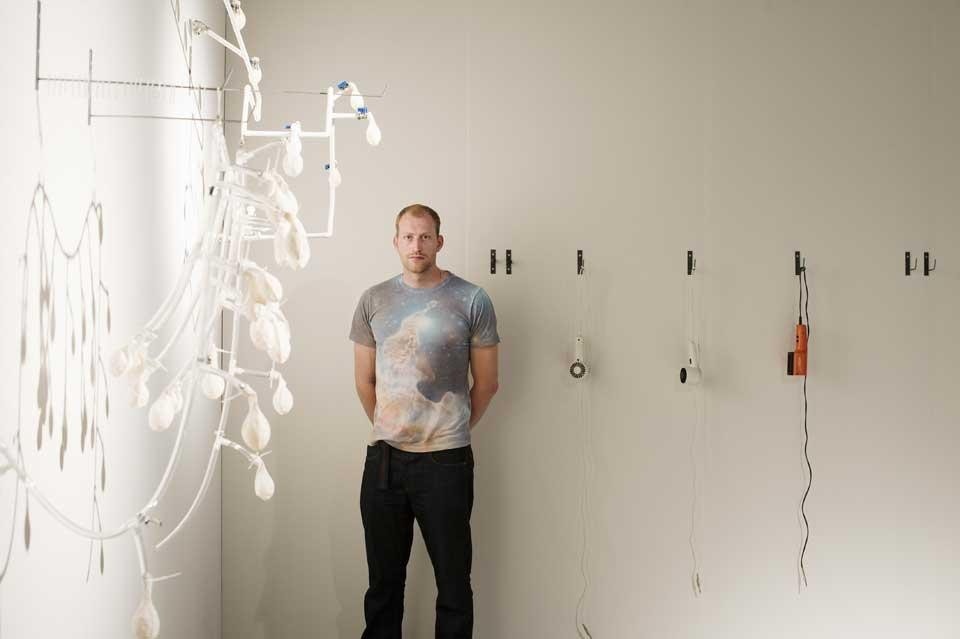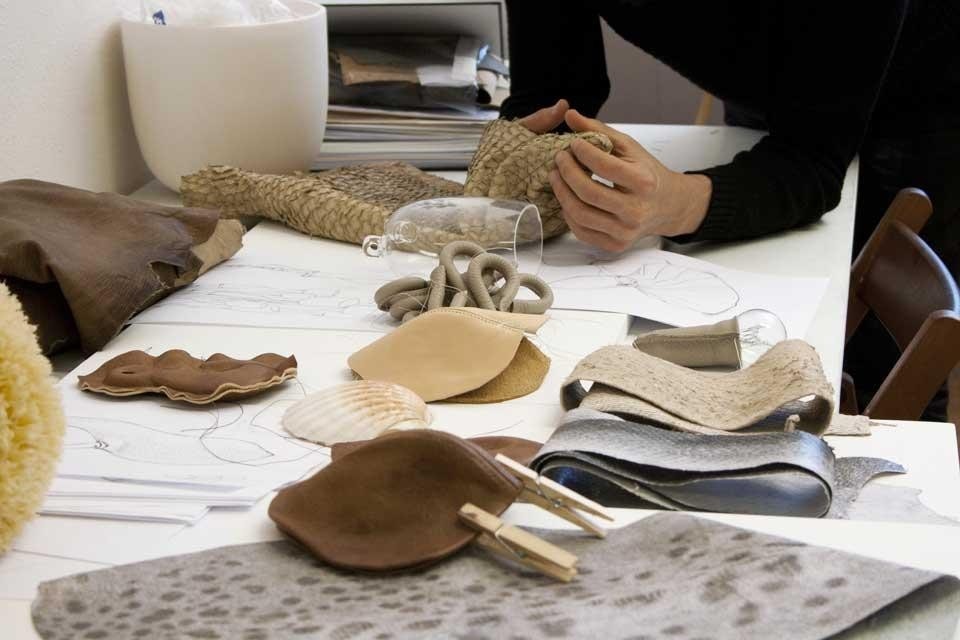The iconic fair, directed by Marianne Goebl (well versed on both design history and more experimental productions), this year presented the new Fernando and Humberto Campana collection for Roman O Gallery. The Brazilian Baroque Collection features a sofa and chair with a bombastic, hyper-decorated, gilded-bronze structure that at first glance conjures up Louis IV. Upon closer inspection, you catch sight of jungle animals, here welded in silver, that have always marked the two brothers' work. Two salon pieces are lined with Cipria eco-fur as a reminder that luxury is a game that should not be taken seriously and that appearances do not always correspond to the reality. The sofa-chair duo is combined with two lilac chairs and two candelabra, one in dark-brown Turkish alabaster and one in white Carrara marble — completing a series derived from the designers' long and much-loved stay in Rome.
For the Carpenters Workshop Gallery, Studio Job thought of far-off places and dreamt of the India of the maharajahs before overturning the Taj Mahal and making a bronze table out of it — the 2012 Taj Mahal Table in an edition of eight. Arik Levy's geometric lines for the Priveekollektie Gallery of Contemporary Art and Design translate into an intricate pale-marble table that twists on itself and is called Knot Table.
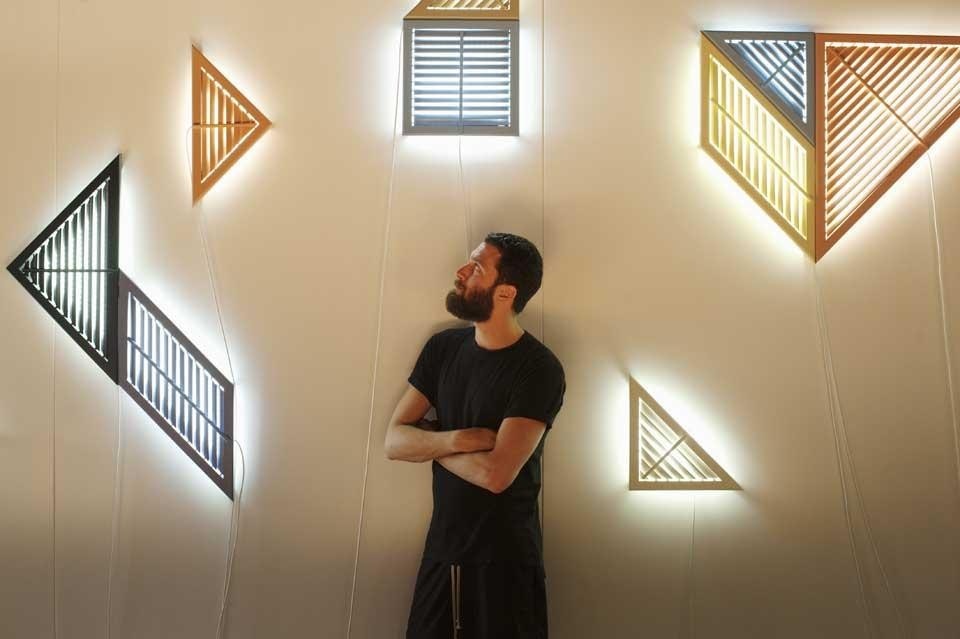
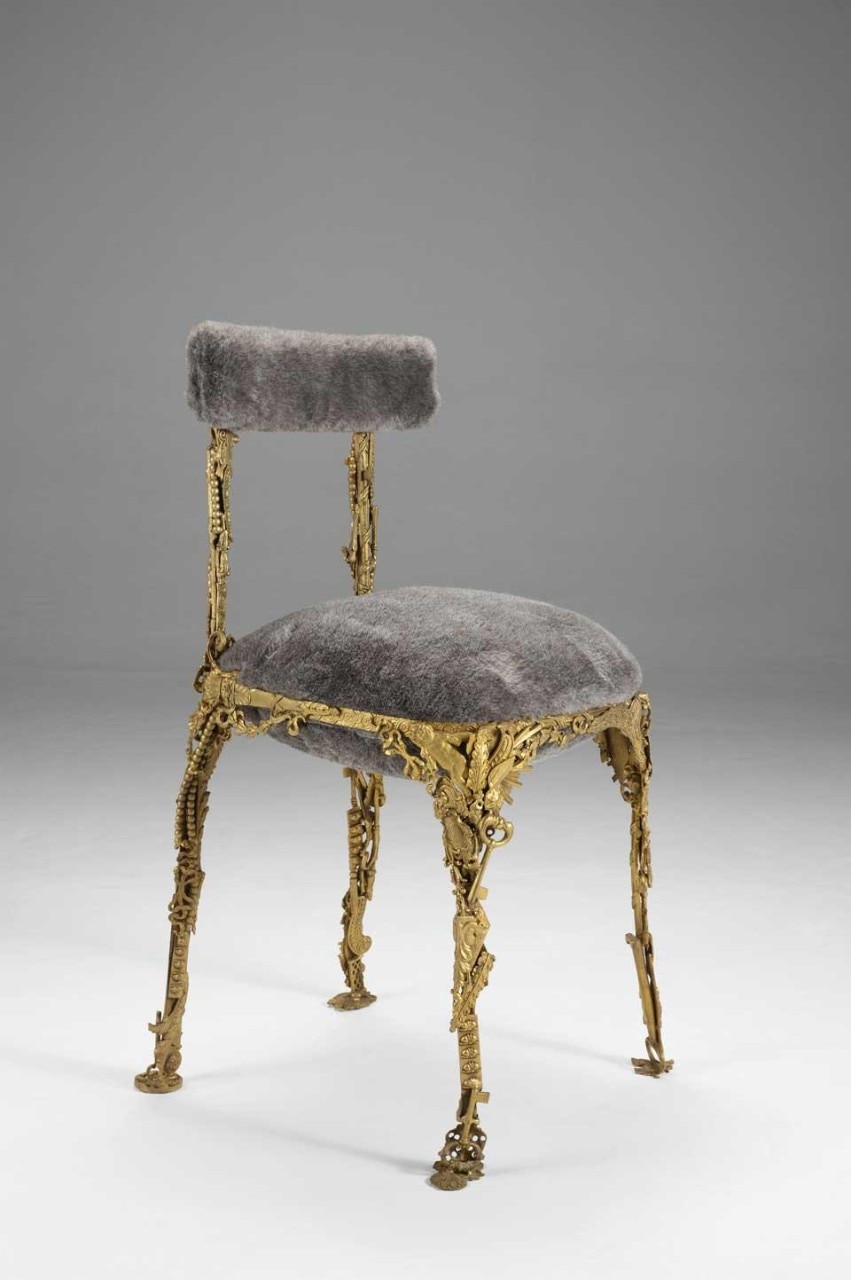
French designer Adrien Petrucci is a surprise. The exciting, conceptual collection by this young designer, presented and acquired exclusively by Milan's Dilmos, consists in four wooden sculptures which include a ladder with a hat-shade, a clock-box and a desk with seat in bare wood recomposed in a new form. His Reformed Objects was conceived conceived for the Ilse Crawford-curated 2011 Graduation Show of the Design Academy in Eindhoven. "Mass production seems to exists over and above us and pursue its own course," explains Petrucci. "The very essence of the product is increasingly more distant and now all we want is consumption for its own sake. My response comes with Reformed Objects, a collection in which I create new objects by stripping existing ones bare. I introduce a sacrificial act that brings out the meaning of the desire and what it involves; sacrifice is a perfect description of the loss and destruction of a prior object that takes place when a new object is created. My process transforms the object from mass-produced and anonymous to unique and profound."
Everything centred on contemporary design, in a triumph of the modern and the limited edition; two categories that, for different reasons, had a single common denominator — figures ending in several zeros
